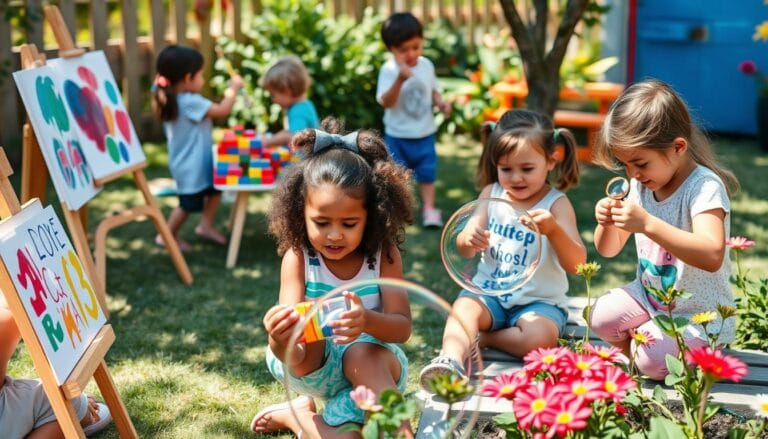
Navigating Teenagers and Social Media Use Safely
Teenagers and social media has become an integral part of teenagers’ lives, shaping their online behavior and influencing their overall well-being. As parents and caregivers, it is crucial for us to understand the impact of social media on youth and guide them towards safe and responsible internet usage.
Research has shown that the developing brains of teenagers may be vulnerable to certain features of social media, such as the constant need for validation through likes and the endless scrolling of content. These aspects can have both positive and negative effects on adolescents, making it essential for parents to set limits on social media use and engage in ongoing discussions about online safety.
Key Takeaways:
- Teenagers and social media, understanding social media’s influence on teenagers helps parents navigate their behavior online.
- Setting limits on social media use and having open discussions about online safety are crucial.
- Monitoring and guiding teenagers’ social media use promotes responsible internet behavior.
- Modeling healthy social media use establishes positive habits for teenagers to follow.
- Being aware of the signs of problematic social media use allows parents to intervene when necessary.
Recognizing Vulnerabilities in Adolescent Brains
During puberty and early adulthood, the adolescent brain undergoes significant development and changes. This period is characterized by heightened sensitivity in brain regions associated with the desire for peer attention, while areas crucial for self-control do not fully mature until early adulthood.
Unfortunately, social media can exploit these vulnerabilities in the developing adolescent brain. Constant exposure to platforms that encourage excessive usage and emphasize popularity metrics, such as likes and followers, can negatively impact brain development and lead to addictive behaviors.
To promote healthy brain development in adolescents, it is essential for parents to proactively limit social media use on platforms that facilitate excessive engagement and avoid those that prominently display counts of likes to prevent the brain from being adversely affected.
The Importance of Screen Time Limits and Sufficient Sleep
Setting screen time limits is crucial for mitigating the potential negative impact of social media on adolescent brain development. By encouraging alternative activities, such as physical exercise, reading, or engaging in hobbies, parents can help their teenagers maintain a healthy balance between screen time and other essential aspects of life.
Moreover, sufficient sleep plays a vital role in brain development and overall well-being. Research has indicated a link between excessive screen time before bed and reduced sleep duration and quality in adolescents. Establishing a consistent bedtime routine that incorporates screen-free time before sleep can promote healthier brain development and better cognitive functioning.
To summarize, parents should prioritize limiting social media use on platforms that encourage excessive engagement and abstain from platforms that emphasize popularity metrics. Setting screen time limits and ensuring adequate sleep are equally important strategies for fostering healthy brain development in adolescents.
| Strategies for Promoting Healthy Adolescent Brain Development | Key Takeaways |
|---|---|
| Limit social media use on platforms that encourage excessive engagement. | This helps prevent the negative impact of social media on brain development. |
| Avoid platforms that prominently display like counts and seek popularity metrics. | This mitigates the risk of addictive behaviors. |
| Set screen time limits for adolescents. | This ensures a healthy balance between online activities and other aspects of life. |
| Encourage alternative activities, such as physical exercise, reading, or hobbies. | This promotes a well-rounded development beyond social media. |
| Establish a consistent bedtime routine with screen-free time before sleep. | This supports better sleep quality and duration. |
Monitoring and Discussing Social Media Use
As parents, it is essential to have a multifaceted approach to managing your teen’s social media activity. This approach involves setting time limits, implementing parental monitoring, and engaging in ongoing discussions with your teens. By utilizing these strategies, you can ensure that your teens have a safe and positive experience on social media.
To begin, setting time limits is crucial to help your teens develop self-control and avoid excessive use of social media. By establishing clear guidelines for when and how long they can use social media, you can promote a healthy balance between online and offline activities. Additionally, it is important to limit access to chat functions and adult content, protecting your teens from potentially harmful interactions and inappropriate material.
Parental monitoring is another important aspect of managing social media use. By keeping an eye on your teen’s online activity, you can identify any potential risks or concerns. This monitoring can involve regularly checking their profiles, reviewing their friend lists, and being aware of the platforms they are using. It is crucial to respect your teen’s privacy while also ensuring their online safety.
However, monitoring alone is not enough. Ongoing discussions with your teens about social media use play a vital role in helping them navigate the online world responsibly. By initiating conversations about their experiences, interests, and challenges on social media, you can gain insight into their online interactions and provide guidance when necessary. It is also beneficial to pose hypothetical situations to encourage critical thinking and decision-making skills related to social media use.
Remember to approach these discussions with empathy, understanding, and openness. Listen to your teens’ perspectives and concerns without judgment, and provide guidance and advice based on your own experiences and knowledge. By fostering open communication, you can build trust and encourage your teens to come to you with any social media-related issues or questions they may have.
Benefits of Monitoring and Discussing Social Media Use:
- Helps develop self-control
- Protects against inappropriate content
- Identifies potential risks and concerns
- Promotes critical thinking and decision-making skills
- Builds trust and open communication
By implementing time limits, parental monitoring, and engaging in meaningful discussions with your teens, you can help them navigate the ever-changing landscape of social media responsibly and safely.
| Strategies for Monitoring and Discussing Social Media Use: | Key Benefits: |
|---|---|
| Setting time limits | Promotes self-control and balance |
| Limiting access to chat functions and adult content | Protects against harmful interactions and inappropriate material |
| Parental monitoring of online activity | Identifies potential risks and concerns |
| Engaging in ongoing discussions about social media use | Builds critical thinking and decision-making skills |
Modeling Healthy Social Media Use
Teens learn social media behavior and attitudes from their parents, so it is important for adults to model good digital behavior. By setting an example of healthy social media use, parents can guide their teenagers towards responsible online habits.
One effective strategy is for parents to set limits for their own social media use. This demonstrates the importance of balancing online activities with real-life experiences. Avoiding the use of social media during family time allows for uninterrupted bonding and fosters meaningful connections. It also sends a message to teenagers that there are appropriate times and places for social media interaction.
Promoting Digital Detox: Social Media Holidays
In addition to setting limits, families can benefit from taking social media holidays together. Encourage your family to take breaks from social media, during which everyone refrains from using any social media platform. Use this time to engage in offline activities, such as going for a walk, playing board games, or having conversations. Discuss the challenges and temptations of being away from social media and address any concerns or questions that arise.
- Benefits of social media holidays:
- Reduced stress and anxiety
- Increased productivity and focus
- Enhanced real-life relationships
- Improved mental well-being
- Opportunity for self-reflection and self-discovery
By participating in social media holidays as a family, you demonstrate that social media is not a constant necessity and that a healthy balance can be achieved. It also provides an opportunity to discuss the impact of social media on well-being, the importance of disconnecting, and how to make intentional and mindful choices when using digital platforms.
Modeling good digital behavior and incorporating social media holidays into your family routine can contribute to healthier habits and attitudes towards social media for both parents and teenagers. Remember, your actions speak louder than words when it comes to guiding your teenagers through the digital landscape.
Recognizing Problematic Social Media Use
Social media can have both positive and negative impacts on teenagers. While it offers various benefits, such as staying connected with friends and accessing information, it’s important for parents to watch for signs of unhealthy social media use. Recognizing these signs early on can help prevent dependence on social media and protect teenagers from potential psychological harm.
Detecting Signs of Unhealthy Social Media Use
Parents should pay attention to various indicators that may suggest problematic social media use. Some common signs include:
- Interference with daily routines, such as neglecting schoolwork or missing out on activities
- Choosing social media over in-person interactions and relationships
- Lack of sleep and physical activity due to excessive time spent on social media
- Continued use despite expressing a desire to stop or reduce usage
- Engaging in deceptive behavior, such as creating fake accounts or hiding social media activities
Recognizing these signs can help parents intervene and initiate conversations about their child’s social media habits.
Addressing Unhealthy Social Media Use
If parents have concerns about their child’s social media use, it’s essential to approach the situation with care and open communication. Engaging in a dialogue about their experiences on social media can provide valuable insights and help parents understand their child’s motivations and challenges.
Based on the severity of the situation, parents may consider enforcing new limits on social media usage. Setting boundaries around screen time and encouraging alternative activities offline can help reduce dependence on social media.
If necessary, seeking the support and guidance of a mental health professional can be beneficial in addressing the psychological harm caused by social media. They can provide strategies, coping mechanisms, and therapeutic interventions tailored to the individual needs of the teenager.
Supporting Healthy Social Media Habits
In addition to recognizing problematic social media use, parents should also focus on promoting healthy habits and behaviors. This includes:
- Modeling good digital behavior by demonstrating responsible social media use
- Encouraging social media holidays as a family to promote balance and reduce dependence
- Encouraging engaging offline activities and hobbies
- Providing guidance on privacy settings and online safety
To illustrate the impact of unhealthy social media use, the table below highlights the potential psychological harm associated with excessive social media use:
| Effects of Unhealthy Social Media Use | Psychological Harm |
|---|---|
| Increased feelings of loneliness and isolation | Emotional distress and reduced well-being |
| Comparison and self-esteem issues | Body dissatisfaction and negative self-image |
| Cyberbullying and online harassment | Mental health issues, including anxiety and depression |
| Sleep disturbances and fatigue | Impaired cognitive function and decreased academic performance |
By recognizing the signs of unhealthy social media use and implementing strategies to promote healthy behaviors, parents can help their teenagers navigate social media in a way that safeguards their well-being and fosters positive online experiences.
Teaching Social Media Literacy
Social media literacy is crucial for teenagers to have positive experiences and reduce risks online. Parents, schools, and social media platforms all have a role to play in teaching social media literacy.
Parents can have open conversations with their children about the responsible use of social media. By discussing how and why they use social media, parents can provide guidance and set a positive example. It is important for parents to establish limits on social media use and encourage their children to follow them.
Schools can contribute to social media literacy by incorporating it into their curriculum. By teaching students how to navigate social media safely, critically evaluate online content, and recognize potential risks, schools can empower them to make informed decisions online.
Additionally, social media platforms can provide resources and tools to help adolescents navigate the online world responsibly. This can include educational materials, safety features, and privacy settings that promote positive experiences and protect users from potential harm.
The Role of Parents, Schools, and Social Media Platforms in Teaching Social Media Literacy
Parents, schools, and social media platforms all have unique roles and responsibilities in teaching social media literacy to teenagers.
| Role | Responsibilities |
|---|---|
| Parents | – Engage in open conversations about social media – Set limits on social media use – Encourage responsible online behavior – Model healthy social media habits |
| Schools | – Incorporate social media literacy into the curriculum – Teach students how to navigate social media safely – Foster critical thinking skills for evaluating online content – Promote responsible online behavior |
| Social Media Platforms | – Provide educational resources on social media literacy – Offer safety features and privacy settings – Promote positive online experiences – Raise awareness about online risks and how to avoid them |
By working together, parents, schools, and social media platforms can equip teenagers with the knowledge and skills they need to navigate social media in a safe and responsible manner.
Ensuring Privacy on Social Media
Privacy settings are crucial for maintaining privacy and safety on social media. It is important for teenagers to check and update their social media privacy settings regularly on every platform they use. By keeping profiles private and limiting the information shared, teens can reduce the risk of online predators and other potential threats.
One effective way to protect personal information is by adjusting privacy settings. Teens should ensure that their account is set to private, so only approved friends can see their posts and personal details. Additionally, they should carefully review each platform’s privacy options, as they may vary across different social media sites. It is essential to understand the privacy settings available for each platform and utilize them to safeguard personal information.
When creating a profile on social media, it is wise for teens to avoid sharing sensitive information such as their full name, address, phone number, or school name. By refraining from divulging personal details, teens can minimize the risk of identity theft and protect themselves from online predators.
Accepting Friend Requests and Sharing Information
Teens should exercise caution when accepting friend requests from strangers. It is essential to establish a connection only with individuals they know personally and trust. Encourage your teen to consider the following factors before accepting friend requests:
- Do they recognize the person’s name or profile picture?
- Have they interacted with the person before?
- Is the person’s profile information genuine and consistent?
Teens should also think twice before posting personal information or emotions online. Remind them that once something is shared on social media, it can be challenging to completely remove or control who sees it. Encourage responsible online behavior and emphasize the importance of thinking before they post.
Staying Safe Online
In addition to adjusting privacy settings and being cautious about sharing personal information, there are other steps teens can take to stay safe on social media:
- Regularly review and update privacy settings on all social media platforms.
- Use strong, unique passwords for each social media account and enable two-factor authentication whenever possible.
- Avoid clicking on suspicious links or downloading files from unknown sources.
- Be cautious when participating in online contests or surveys, as they may be scams.
- Report and block any individuals who engage in inappropriate or threatening behavior.
By implementing these practices and having open conversations about online safety, parents can help their teens navigate social media while protecting their privacy and well-being.
Conclusion
Navigating teenagers and social media requires a thoughtful and proactive approach from parents and caregivers. By recognizing the vulnerabilities in adolescent brains, monitoring and discussing social media use, modeling healthy behavior, recognizing signs of problematic use, teaching social media literacy, ensuring privacy, and fostering open communication, parents can help their teens use social media safely and responsibly.
It is important to balance the risks and benefits of social media and create guidelines that evolve as teenagers mature. With guidance and support, teenagers can navigate social media in a way that promotes their well-being and maximizes the benefits of digital communication.
By promoting healthy social media use and providing parental guidance, we can ensure that adolescents have a positive and safe experience online. Let’s empower our teens to use social media responsibly and make informed choices, so they can enjoy the benefits and opportunities that social media platforms offer while minimizing the potential risks.
FAQ
How does social media impact teenagers?
Teenagers and social media, social media can have both positive and negative effects on teenagers. It is important for parents and caregivers to understand the risks and benefits of social media use for adolescents.
How does social media affect adolescent brain development?
Research shows that the developing brains of teenagers may be vulnerable to certain features of social media, such as the like button and excessive scrolling. It is crucial for parents to set limits on social media use and have ongoing discussions with their teens about online safety.
How can parents monitor and discuss their child’s social media use?
Monitoring and discussing your child’s social media use, modeling healthy behavior, and being aware of problematic social media use are all important strategies for navigating teenagers and social media.
What can parents do to model healthy social media use?
Parents should avoid using social media during family time and set limits for their own social media use. Taking social media holidays as a family and discussing the challenges and temptations of being away from social media can also promote healthier habits and attitudes towards social media.
What are the signs of problematic social media use in teenagers?
Signs include interference with daily routines, choosing social media over in-person interactions, lack of sleep and physical activity, continued use despite expressing a desire to stop, and deceptive behavior. If parents are concerned about their child’s social media use, they should ask their child about their experiences and consider enforcing new limits.
How can social media literacy be taught to teenagers?
Parents, schools, and social media platforms can all play a role in teaching social media literacy. Parents can discuss how and why they use social media with their children, set limits, and encourage their children to follow their example. Schools can incorporate social media literacy into their curriculum, and social media platforms can provide resources and tools to help adolescents navigate the online world safely.
How can teenagers ensure their privacy on social media?
It is important for teenagers to check and update their privacy settings on all social media platforms they use. By keeping profiles private and limiting the information shared, teens can reduce the risk of online predators and other potential threats. It is also important for teens to be cautious when accepting friend requests from strangers and to think before they post personal information or emotions online.
What is the importance of parental guidance in social media use?
Navigating teenagers and social media requires a thoughtful and proactive approach from parents and caregivers. By recognizing the vulnerabilities in adolescent brains, monitoring and discussing social media use, modeling healthy behavior, recognizing signs of problematic use, teaching social media literacy, ensuring privacy, and fostering open communication, parents can help their teens use social media safely and responsibly.















